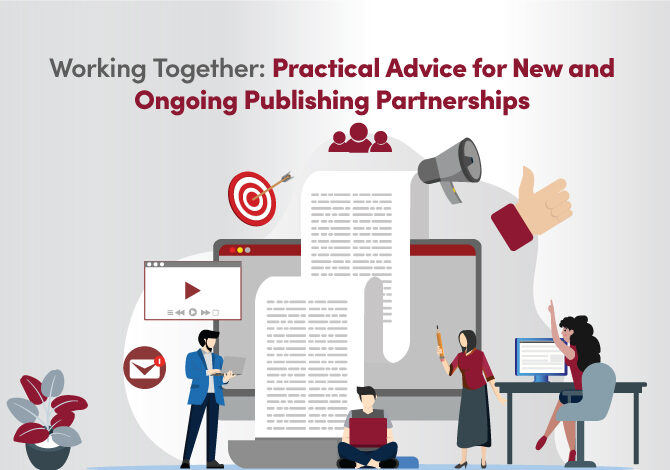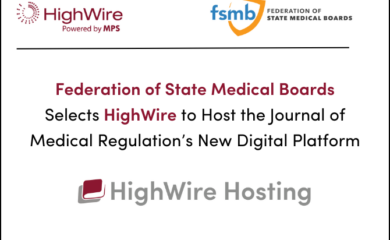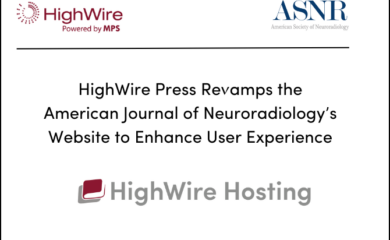As the scholarly communications landscape continues to evolve, so too do the expectations of, and relationships between publishers and editorial offices. Whether you’re entering a new partnership or looking to strengthen an existing one, this session will feature publisher, society, and editorial office representatives sharing their individual perspectives and practical steps to ensure successful collaboration. It will focus on how to work together to deliver on a journal or society’s strategic objectives, and how to evaluate an ongoing publishing partnership to determine whether it’s the right option for you.
Learning Objectives:
- Gain an understanding of key elements of a successful collaboration between editorial offices and publishers, including financial, operational, and strategic factors that influence the relationship.
- Learn how to craft insightful and effective questions to gather vital information about revenue streams, audience engagement, journal performance, and future publishing strategies that may align with organizational goals.
- Review potential risks and opportunities that may impact the journal’s performance and sustainability that should be discussed within the publisher and editorial office relationship or added to an RFP to find a new publisher.
- Moderator
- Denise Kuo, JMIR Publications
- Speakers
- Adam Etkin, Origin Editorial
- Heather Goodell, American Heart Association
- George Woodward, Oxford University Press
Keys to Success in Managing a Workflow System and Hosting Platform RFP and Planning a Migration
Requests for proposals (RFPs) can seem daunting and cumbersome, and switching systems can seem even more so. This session will help demystify these processes and give attendees the knowledge they will need to confidently manage a workflow system and hosting platform RFP and successfully transition systems. The learning objectives for this session are (1) what to consider when conducting a workflow system and hosting platform RFP and (2) how to plan for a migration. Attendees will walk away knowing how to prepare for both an RFP and a system transition.
- Moderator
- Sarah E. Wright, DVM, American Veterinary Medical Association
- Speakers
- David M Allen, Origin Editorial
- Tony Alves, HighWire Press
- Sarah McCormack, American Society for Nutrition
- Meghan McDevitt, Origin Editorial
Working Together: How True Collaboration Builds Stronger Publishing Partnerships
In scholarly publishing, collaboration is no longer a soft skill—it’s a strategic necessity. As the ecosystem evolves, partnerships between vendors and publishers must move beyond transactional models toward relationships grounded in shared goals, open communication, and mutual accountability.
Whether you’re evaluating your current publisher or vendor, transitioning to a new platform, or preparing for a system migration, successful outcomes rely on collaborative planning and execution. The most effective publishing teams know that success is not about any one system or decision—it’s about working together across every phase of the publishing lifecycle.
Reframing the Relationship: From Vendor to Partner
A recurring message in publishing best practices is clear: treat vendors as strategic partners who share in your journal’s mission and performance goals.
For example, re-evaluating your publishing partnership can help better align priorities like open science, global reach, and ethics oversight. Move beyond simply checking off deliverables and engage the partner in long-term planning around audience engagement, content format innovation, and accessibility standards.
Both sides bring unique strengths:
- Editorial offices understand the community, subject matter, and scientific mission.
- Publishers and vendors provide technical infrastructure, content distribution, scale, and strategic marketing.
In a strong partnership, these strengths are not siloed—they’re integrated through regular dialogue and shared decision-making. One takeaway? “Know your partner’s culture. You should actually enjoy working together.”
Communication: The Engine of Collaboration
At the heart of every successful publishing relationship is consistent, transparent communication. This includes:
- Clear reporting expectations (e.g., article performance metrics, financial updates, turnaround times)
- Defined roles and escalation pathways
- Open discussions about new features, revenue models, and strategic risks
For example: A society journal might implement quarterly meetings that include not just editorial leadership and publishing contacts but also technical staff, marketing teams, and accessibility experts. This broader scope fosters cross-functional insight and faster issue resolution.
Even contract structures can support better communication. For instance, ensuring the contract clarifies who decides on pricing models, platform upgrades, and brand presentation reduces conflict and empowers collaboration.
When It’s Time to Reevaluate
Not all partnerships last forever. Knowing when to assess alternatives is an act of strategic maturity—not failure.
Two main reasons were identified for making a change:
- Financial concerns: Costs outpacing value or misalignment in revenue sharing.
- Dissatisfaction: Unmet expectations, lack of innovation, or limited flexibility.
But how you handle the decision matters just as much as the “why.”
Best Practices:
- Start early. One journal advised reviewing the “termination clause” and working backward to give enough time for thoughtful planning.
- Ask good questions. For example: “What new services or technologies will support our growth in the next five years?” or “How do you support accessibility standards?”
- Know your story. Journals should be able to articulate their mission, challenges, and growth goals to any prospective new partner.
Issuing an RFP: A Collaborative Process from the Start
When it’s time to seek a new vendor or platform, issuing a Request for Proposals (RFP) should itself be a collaborative undertaking—not just a procurement task.
Before the RFP
- When preparing RFPs for peer review platforms, web hosting, and editorial office services, success depends on:
- Gaining internal alignment across departments
- Engaging a consultant for complex projects
- Thinking beyond today’s needs to include future technologies
Writing the RFP
Publishers and service providers encourage journals to:
- Be specific: Outline workflows, required features, and pain points.
- Include formatting templates for vendor responses.
- Ask not just “can you do this?” but “how does your system support our goals?”
A key insight: don’t prescribe how a system should work. Instead, ask how a platform meets your needs and what solutions it offers for your challenges.
Evaluating Responses
From the vendor side, preparation includes:
- Answering use-case-specific questions
- Providing detailed demos—live or “canned”
- Offering references that reflect platform support, feature rollout, and onboarding
From the customer side, reviewers are advised to:
- Remain open-minded—newer systems may offer flexibility, while older ones may be more stable.
- Talk to multiple references and be honest about deal-breakers.
- Build and share a rubric to score proposals against prioritized needs like UX, interoperability, security, and accessibility.
Migration: Collaboration in Motion
Once a new platform is selected, the real work begins—migration. A well-managed migration depends heavily on coordinated planning, shared timelines, and constant communication.
Key Phases:
- Data Migration: Clean, map, and test metadata. Address gaps early.
- Workflow Configuration: Review, adapt, and test workflows based on new platform capabilities.
- Training: Offer training tailored to each user group—editors, reviewers, authors, and support staff.
- Launch Preparation: Final QA checks, internal comms, stakeholder alignment, and contingency plans for support.
One team emphasized that migration should not just be a rebuild of old processes—it’s a chance to rethink and improve workflows. For example, they took the opportunity to integrate better manuscript triage, add custom metadata tags, and simplify author guidelines within the submission system.
Collaborative Takeaways for a Stronger Future
Every example reinforces a central truth: collaboration is not a phase—it’s a practice. Journals that build strong partnerships are those that:
- Engage in regular strategic conversations—not just performance reviews.
- View contract negotiation as the beginning of a dialogue, not the end.
- Ask tough questions early and often.
- Remain flexible and open to shared learning—especially during times of change.
Final Thoughts
The best publishing partnerships are those where each side understands the mission, trusts the process, and shares in the outcomes. Whether you’re assessing your current partnership, launching an RFP, or executing a system migration, remember:
“Partnership is not a deliverable—it’s a relationship. And relationships thrive on clarity, curiosity, and collaboration.”
In scholarly publishing, where the stakes include research integrity, scientific reputation, and the global flow of knowledge, working together is not just wise—it’s essential.
– By Tony Alves



